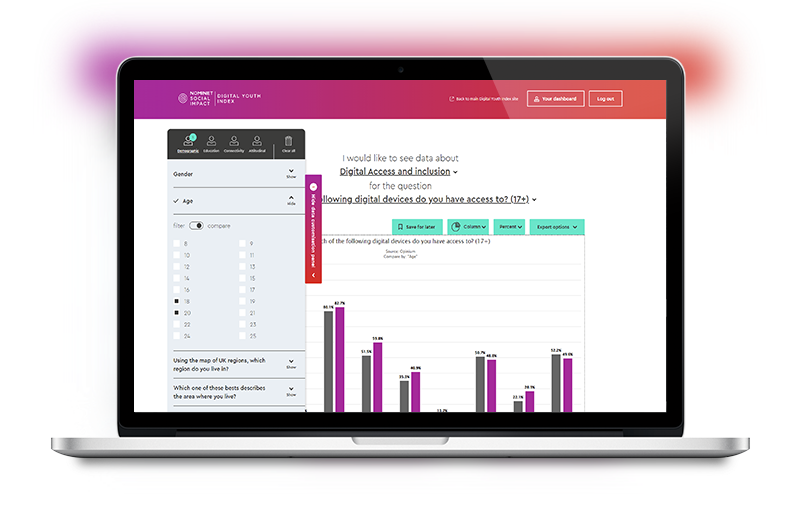Inequality in our digital lives how do we leave no-one behind?
2.1 million young
adults are at risk of becoming
digital castaways
2.9 million young people (21%) do not have access to either a laptop or desktop and a third (32%) of young people do not have access to home broadband. Combined, this leaves 6 million (42%) young people without home broadband or a laptop/desktop. While many of these will be younger people, it equates to 30% of those aged 18 and above who are more likely to be living alone and relying on work, colleges or universities for their IT needs, equivalent to 2.1 million young people.
Why does this matter?
When it comes to digital adoption, we might all be in the same storm – but we are all in different boats. Young people are all unique – and it can often be specific things that leave them stranded. For instance: can school support with providing a device? Does the area have good quality broadband infrastructure? Is the household needing to share devices and bandwidth with parents, carers and siblings? How do very personal circumstances at home, like having a supportive role model, affect attitudes to home learning? The Digital Youth Index starts with a young person as an individual with needs, aspirations, fears, perceptions, relationships, and motivations. Overlaying the insights around the use of digital technology paints a picture of who benefits and who is left behind.
Implications
- Do we need to redefine digital exclusion to better reflect not just the structural barriers, but the circumstantial and personal factors at play?
- What does a holistic response look like to factors that lead to digital exclusion?
- Do we think young people in the UK have a “right” to home broadband and a device to utilise this connection?
- Is distributing devices an appropriate response to the complex dynamics of unequal access or what else needs to be included?




